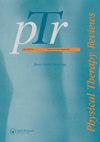物理治疗培训中的解剖学教育:尼日利亚本科物理治疗专业学生的看法
IF 0.8
Q4 REHABILITATION
引用次数: 4
摘要
摘要背景解剖学教育是物理治疗训练的一个组成部分,对临床教育和专业知识有着巨大的影响。关于尼日利亚理疗相关解剖教育的当前趋势的文献很少,因此很难确定需要改进的具体领域,以实现有效的教学过程。目的这项横断面研究调查了尼日利亚理疗培训项目本科生对解剖学教育的概况、承诺、相关性和挑战的看法。方法对429名物理治疗专业本科生进行结构化问卷调查,了解解剖学教育的知识、观念及其与物理治疗训练和实践的相关性。结果350份问卷全部填写完毕,回复率81.6%。学生的解剖学档案显示,大多数学生接受了3-4个学期(58.3%)的解剖学教育,平均每节课一小时(70.0%),通常包括401至600名学生(58.0%)。尽管所有学生都报告过解剖课,但只有11.7%的学生报告过对此类课程的充分监督。>50%的学生意识到解剖学教育与物理治疗训练和实践的相关性。然而,他们对解剖学教育的投入普遍较差。有效的解剖学教育面临的主要挑战包括解剖学教育时间不足(70.0%)、班级规模大(67.1%)和不监督解剖课程(22.6%) > 0.05)预测学生对解剖学教育的投入。结论物理治疗专业本科生意识到解剖学教育在物理治疗训练和实践中的重要性。然而,有效解剖学教育的障碍已经被发现。为了改进物理治疗训练,需要修改解剖学教育。本文章由计算机程序翻译,如有差异,请以英文原文为准。
Anatomy education in physiotherapy training: perceptions of Nigerian-based undergraduate physiotherapy students
Abstract Background Anatomy education is an integral aspect of physiotherapy training with tremendous effects on clinical education and expertise. Literature is scarce on the current trends in physiotherapy-related anatomy education in Nigeria, making it difficult to identify specific areas that require improvement to enable effective teaching-learning processes. Objectives This cross-sectional study investigated the profile, commitment to, perceptions of relevance and challenges of anatomy education among undergraduate students of Nigerian physiotherapy training programmes. Methods Structured questionnaires, seeking information on knowledge and perceptions of anatomy education as well as its relevance to physiotherapy training and practice were distributed to 429 physiotherapy undergraduates. Results 350 questionnaires were completely filled and returned (81.6% response rate). Students’ anatomy profiles showed that majority of the students were exposed to anatomy education for 3–4 semesters (58.3%) with an average of one hour per lecture period (70.0%) which commonly comprised 401–600 students (58.0%). Despite that all the students reported exposure to dissection classes, only 11.7% reported adequate supervision of such classes. >50% of the students were aware of the relevance of anatomy education to physiotherapy training and practice. However, their commitment to anatomy education was generally poor. Major challenges of effective anatomy education included inadequate time for anatomy education (70.0%), large class size (67.1%) and non-supervision of dissection classes (22.6%). Age, gender and choice of physiotherapy as the primary intended course of study were not (p > 0.05) predictors of students’ commitment to anatomy education. Conclusion Physiotherapy undergraduates are aware of the relevance of anatomy education in physiotherapy training and practice. However, barriers of effective anatomy education were identified. Modifications in anatomy education are required for improved physiotherapy training.
求助全文
通过发布文献求助,成功后即可免费获取论文全文。
去求助
来源期刊

Physical Therapy Reviews
REHABILITATION-
CiteScore
1.30
自引率
0.00%
发文量
26
期刊介绍:
Physical Therapy Reviews is an international journal which aims to publish contemporary reviews, discussion papers and editorials within physical therapy, and in those basic and clinical sciences which are the basis of physical therapy. The journal is aimed at all those involved in research, teaching and practice within the area of physical therapy. Reviews (both descriptive and systematic) are invited in the following areas, which reflect the breadth and diversity of practice within physical therapy: •neurological rehabilitation •movement and exercise •orthopaedics and rheumatology •manual therapy and massage •sports medicine •measurement •chest physiotherapy •electrotherapeutics •obstetrics and gynaecology •complementary therapies •professional issues •musculoskeletal rehabilitation
 求助内容:
求助内容: 应助结果提醒方式:
应助结果提醒方式:


